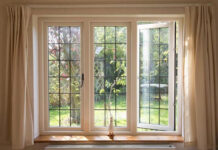Owning a home or taking care of some land is something that a lot of people aim to do. It can be tricky to know just how to manage your property, though. This is especially true when it comes to trees.
Not everyone grows up with the knowledge of trees and tree maintenance, but it’s important to know how to identify a dead tree when you see one according to the experts at the LemonCitrusTree Company. Dead or dying trees can pose the threat of damage to your home. Dead trees might better serve the environment if they fall or are removed as well.
We’re going to explore how to spot the signs of a dead tree in this article, giving you some insight into how to better take care of your land and protect your home.
Let’s get started:
How to Spot a Dead Tree
Each species of a tree shows unique symptoms when it’s dying. It could serve you well to look into a specific kind of tree if you’re dealing with one dominant species. That way, you’ll be able to spot signs earlier and act more quickly.
Most homes are surrounded by a number of different trees, though. Fortunately, there are some easy ways to know when a tree is losing life, get Apopka tree care providers, regardless of the species.
-
Leaf Growth
A tree’s leaves are a reflection of its vitality. Deciduous trees are those that lose their leaves in the fall and grow them back in the spring. Take note of how well your deciduous trees recover each spring.
You should also make a note of when the leaves fall off in the fall. You don’t have to be too meticulous about this point, but just be aware of the timing. You can expect the most deciduous trees to start losing their leaves around the same time.
If one tree starts to shed its leaves far earlier than the rest, that could be a sign that it’s getting old.
On the other hand, evergreen trees should keep their leaves throughout the year. These trees won’t lose a significant amount of leaves or needles at any given time. That said, don’t get too concerned when your pine tree leaves a heap of needles underneath it.
That’s a normal occurrence. The real measure of an evergreen’s health is its coloration.
-
Leaf or Needle Coloration
An evergreen tree might not always be green, but should have a consistent coloration through its lifespan.
An old pine tree, for example, might start to have yellow or brown needles. The same can be said of evergreens that grow leaves. As things start to degrade and age, the tree lessens its ability to provide nutrients to its leaves.
You’ll notice that the needles and leaves of an evergreen start to change color around the same time that they begin to get more sparse. It’s similar to a person’s hair turning grey and falling out.
The signs will creep up over a period of a few years, but it’ll become very noticeable after that point.
-
Unusual Fungus, Plants, or Bugs
Trees commonly serve as homes for little critters, bugs, and vegetation. It’s probable that all of these life forms are working together to benefit the tree and themselves.
That said, trees aren’t natural benefactors to everything. As the tree loses its vitality, it will be more susceptible to pests and destructive plants. It might even serve as a host to pests and plants that aren’t destructive, but only make their way to the tree when it’s dying.
The main idea here is to take note of the cohabitation occurring on the tree in its early years, then throughout the course of its life. You’ll notice that the same life forms gravitate toward the tree throughout the healthy points of its life.
If you’re generally aware of this, you’ll notice when the vegetation and bug populations start to change in a new direction. This is a good sign that the makeup of the tree has changed enough to welcome new life.
That means it’s probably on its way out.
If you’re new to an area and you’re wondering about the health of a tree you’re not familiar with, try finding a healthy tree of the same species.
-
Dead or Weak Branches
A dead branch is a clear indication that the tree is dying, or already dead.
Dead branches don’t bare leaves and tend to have scattered or absent bark. It’s easy to spot a dead branch, especially if none of the other branches are dead. It could be wise to break or cut that branch off so that the tree stops wasting nutrients on it.
If most or all of the branches are dead, it’s a good indicator that the tree is gone as well.
-
Leaning
A dead or dying tree tends to lean in one direction or another.
Healthy trees shoot straight up or in whichever direction they’ll get the most light. Dying trees might not be able to hold their weight up in the correct direction and they’ll start to lean.
This is a sign that the tree is dangerous and could fall at almost any moment.
-
Peeling or Scattered Bark
Bark, just like leaves, are most prominent when the tree is healthy. Bark protects the tree from pests and critters and serves as a shield to block the outside and protect the inside.
If the bark starts to go, it’s a sign that the tree is unhealthy and needs some attention. If nothing is done, the lack of protection could lead to the death of the tree.
-
Damage to The Root System
The root system is essential for a tree’s life, obviously.
That said, it’s really tough to know how far a root system stretches. This makes it pretty tough to avoid roots when you’re doing construction or digging on your property.
Damage from machinery could kill the tree. It’s smart to have an arborist come check it out before you do too much digging on your land. That way, you’ll have a good idea of the layout of root systems as well as how healthy the existing trees are.
Doing Some Home Improvement?
Taking care of a dead tree is an essential job if you want to protect your home from damage. There’s a lot more involved in home maintenance, though, and we’re here to help you through it all.
Explore our site for more insight into home maintenance and improvement.



































































